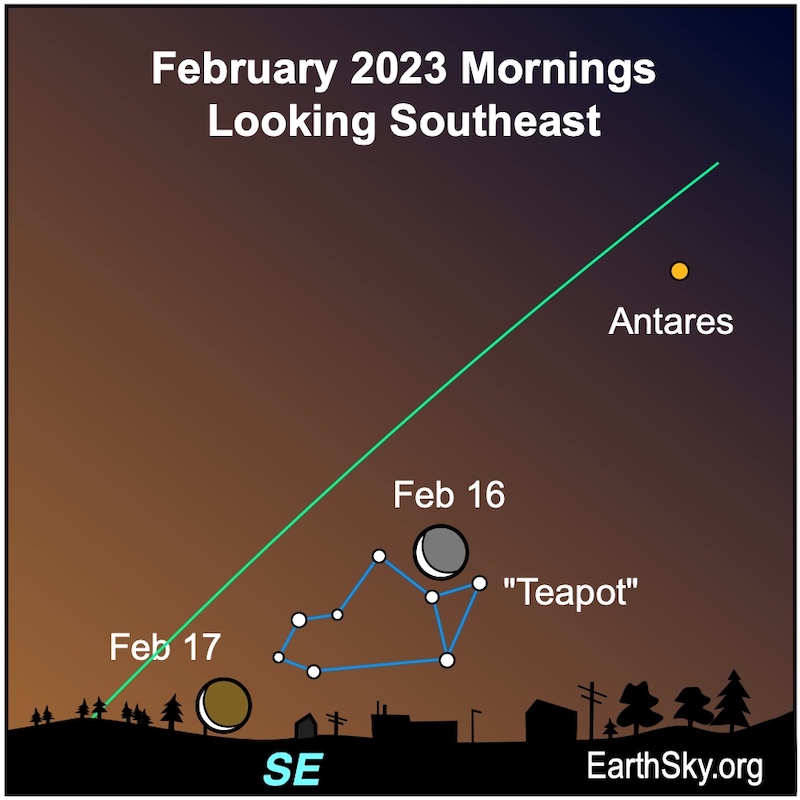
Moon near the Teapot of Sagittarius
Before dawn on February 16 and 17, 2023, you can spot the thin waning crescent moon near the Teapot of Sagittarius the Archer. The Teapot is an asterism, or simple collection of stars that are easy to recognize. The center of our Milky Way galaxy lies in the direction of the Teapot.
Higher in the sky is the bright, reddish star Antares in the constellation Scorpius the Scorpion. The moon passed Antares a few mornings earlier. Our natural satellite travels eastward on the ecliptic, or path of the sun, moon and stars. And so, a few mornings from now, the moon will be close to the sun, reaching new moon phase on February 20.
Since the view of the stars, moon and planets varies by your position on the globe, we suggest you try Stellarium for a precise star chart for your location.
The Teapot is toward the Milky Way’s center
When you’re looking toward the Teapot, you’re looking in the direction of the Milky Way’s center. Specifically, the spout points toward the black hole at the core of our Milky Way galaxy.
On the morning of February 16 and 17 as the Teapot rises, the sky will be growing lighter, heading toward the breaking dawn. Therefore, it may be hard to spot the faint river of the Milky Way at this time of year.
August is one of the best months to view the Teapot and Sagittarius. Then, in a dark sky, you can take full advantage of using the Teapot to find the Milky Way’s center.
Bottom line: Find the thin crescent moon near the Teapot of Sagittarius on the mornings of February 16 and 17, 2023.
For more great observing events in the coming weeks, visit EarthSky’s night sky guide











